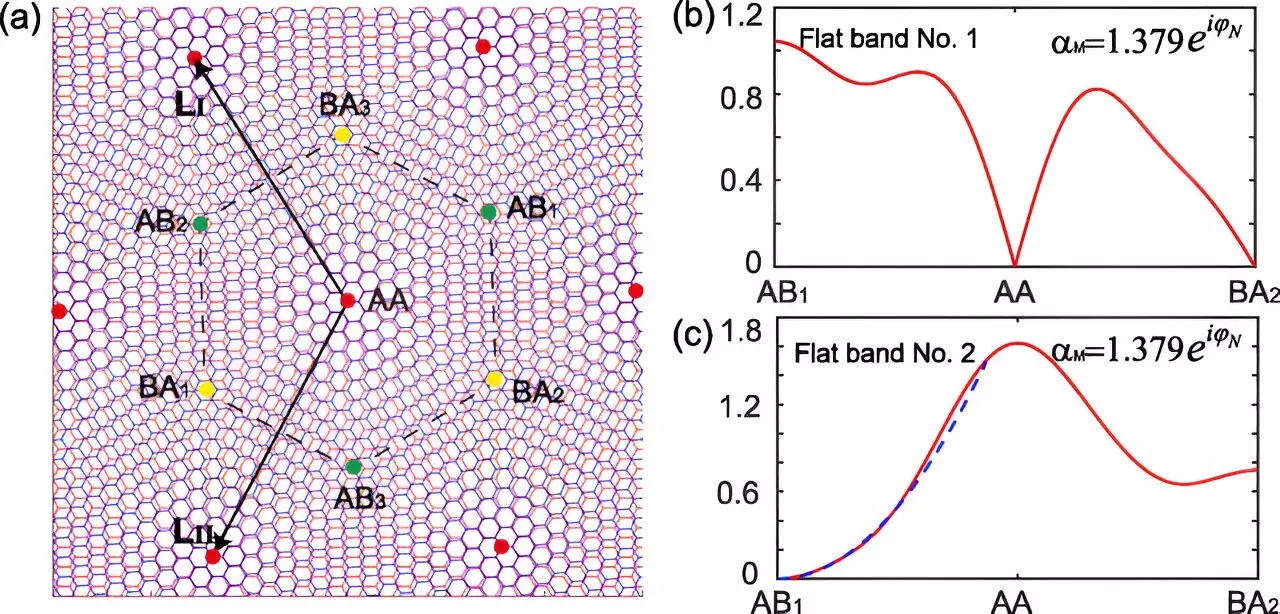The study conducted by RIKEN physicists has unveiled a fascinating aspect of twisted bilayer graphene – the influence of magnetic fields on the creation of flat bands. These flat bands provide a rich playground for exotic physics, opening up possibilities for the exploration of unique electronic properties.
Graphene, a single layer of carbon atoms in a hexagonal lattice, is known for its exotic properties. Electrons in graphene behave as if they have no mass, allowing for the potential development of electronic devices with capabilities beyond traditional silicon-based devices. When two or more layers of graphene are combined, the properties become even more intriguing.
When two sheets of graphene are placed on top of each other with a repeating pattern, a larger pattern emerges when one sheet is rotated, resulting in a moiré pattern. At specific twisted angles, the bilayer graphene exhibits behaviors such as correlated insulator properties and superconductivity. The introduction of a spatially varying magnetic field further enhances the richness of the physics playground in twisted bilayer graphene.
The band structure of graphene plays a crucial role in determining its electronic properties. Twisting two layers of graphene at an angle alters these bands, leading to the formation of flat bands at ‘magic’ twist angles. In these flat bands, electron interactions become dominant due to the minimized kinetic energy of electrons. This results in various strongly correlated electronic phenomena, including unconventional superconductivity.
Through mathematical analysis, researchers have demonstrated that the introduction of a spatially alternating magnetic field can create quadruply degenerate flat bands in twisted bilayer graphene. This higher degeneracy opens up the possibility for additional correlated phenomena, offering a novel degree of freedom to manipulate the electronic band structure.
The discovery of flat bands and the influence of magnetic fields in twisted bilayer graphene has both shocked and excited the physics community. Researchers are now focused on exploring other materials that exhibit similar phenomena, with the aim of systematically searching for new platforms that host flat bands. The potential for uncovering more correlated electronic phenomena in different materials is a promising area of research that could lead to groundbreaking advances in the field of physics.


Leave a Reply